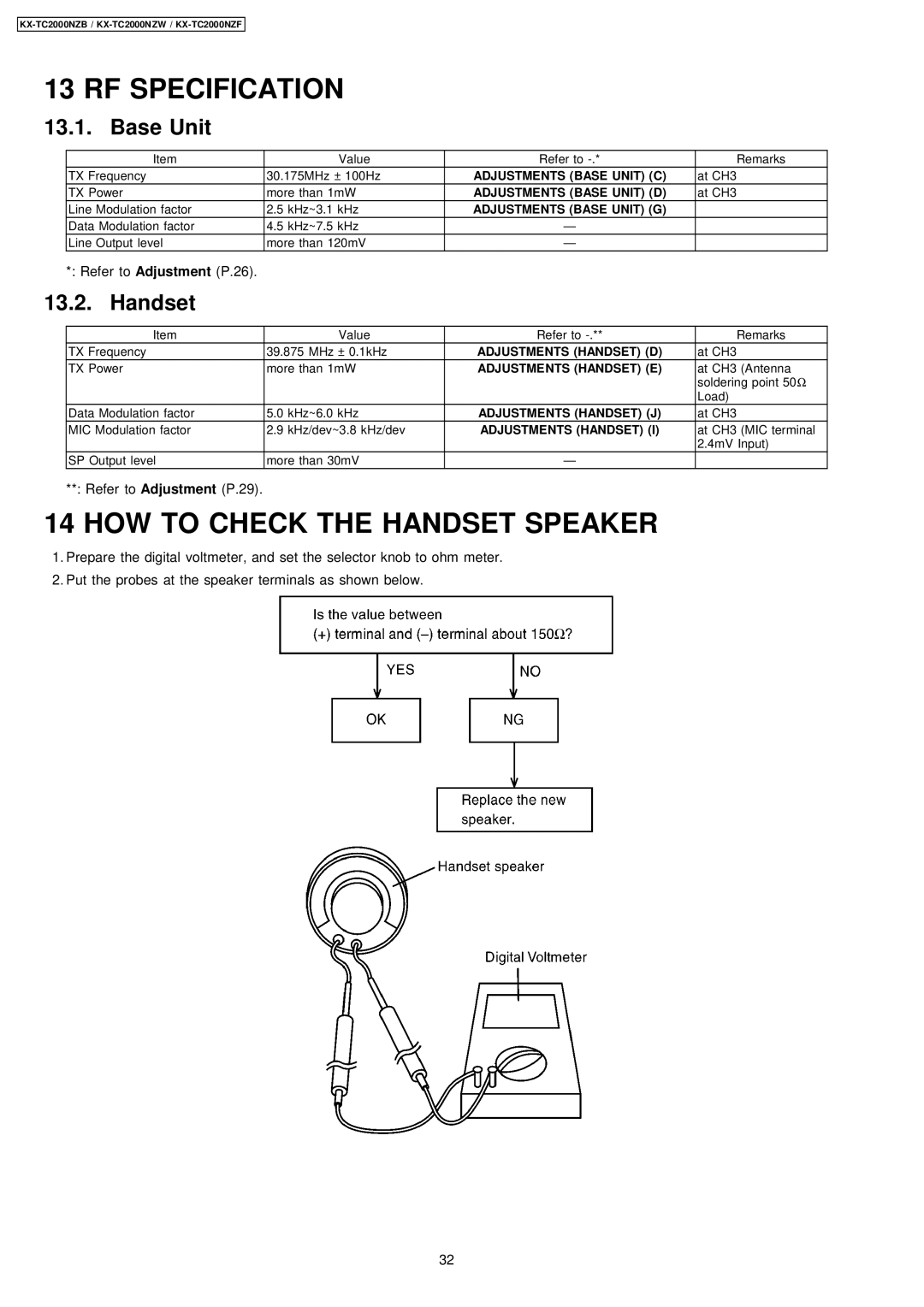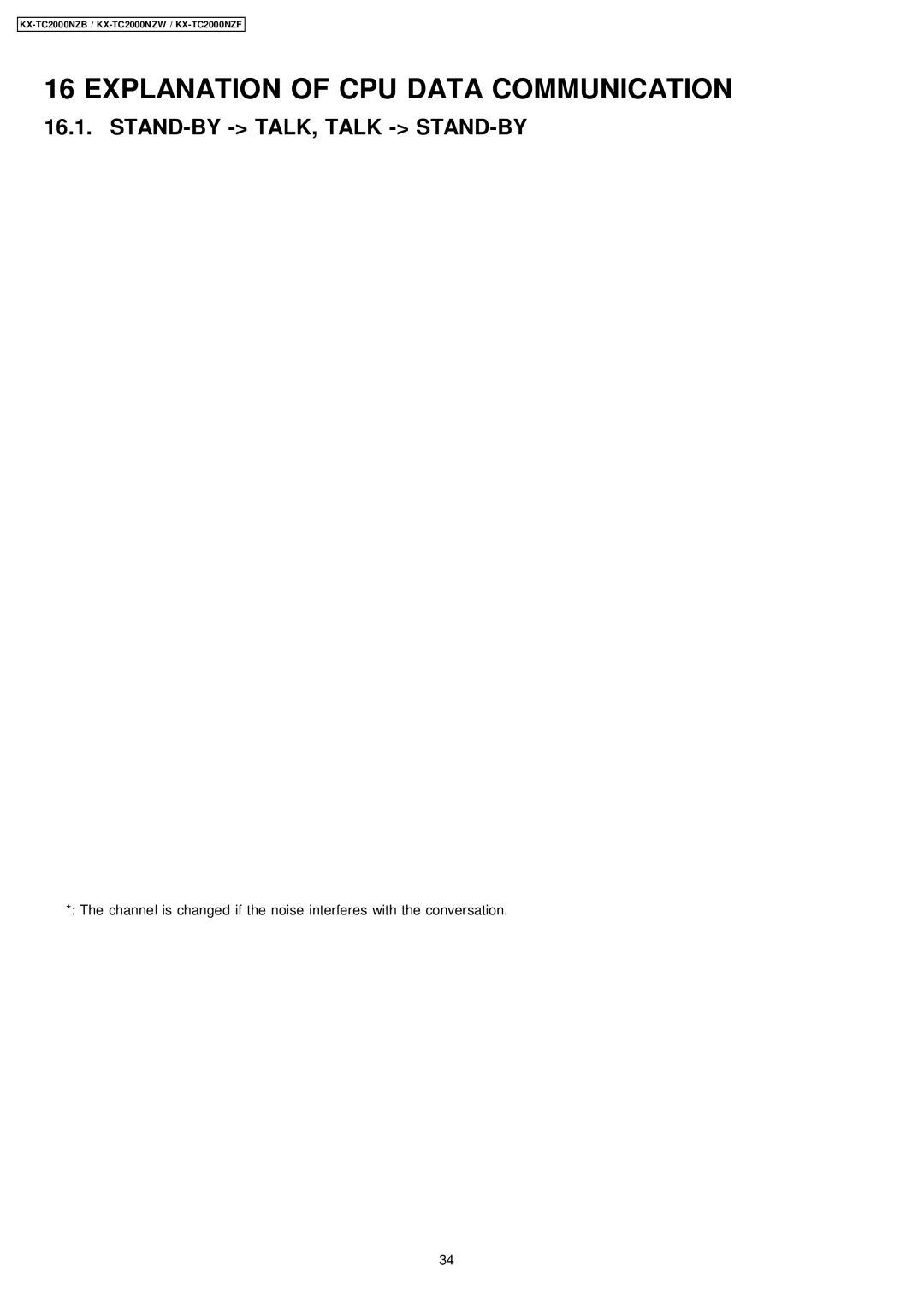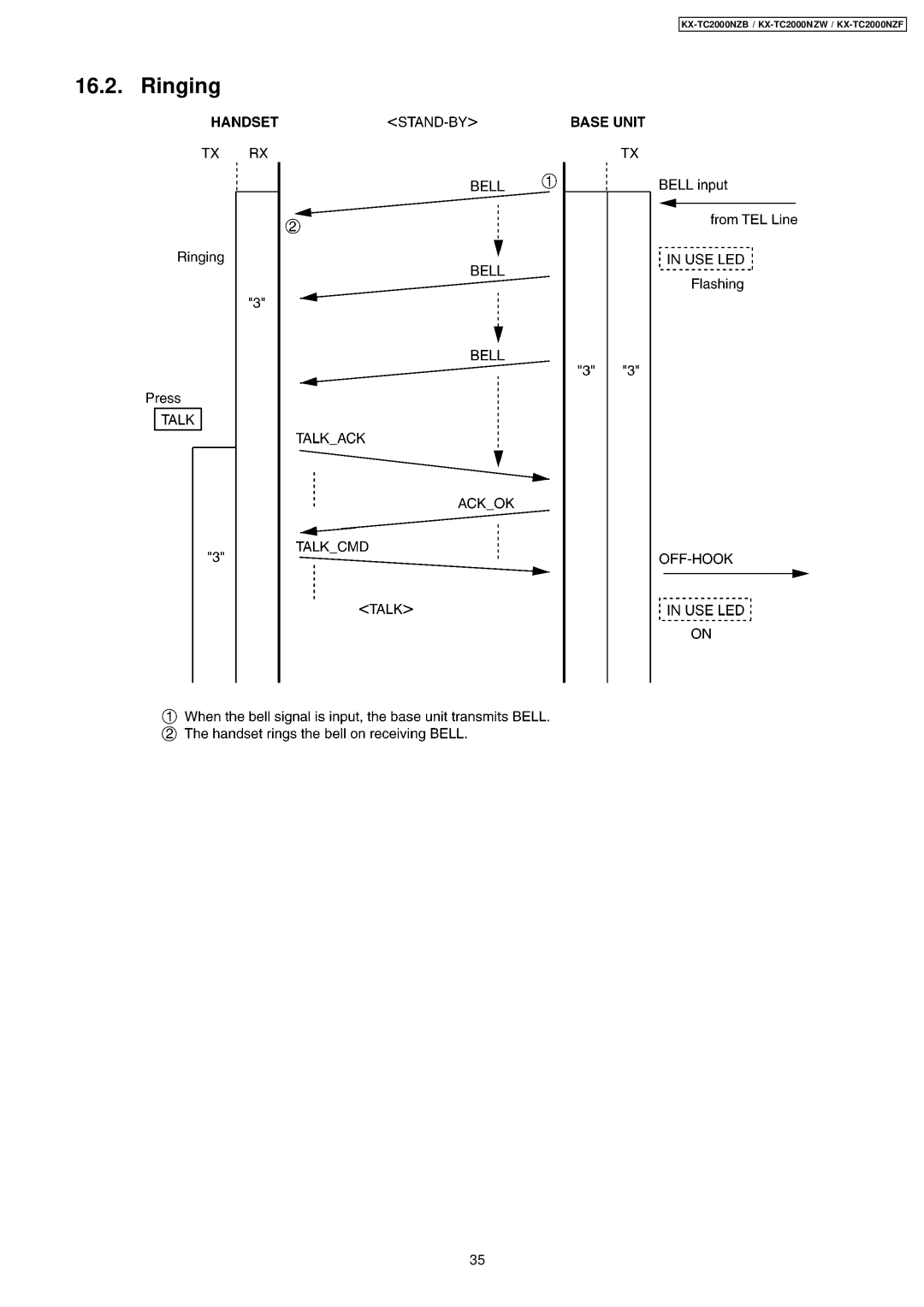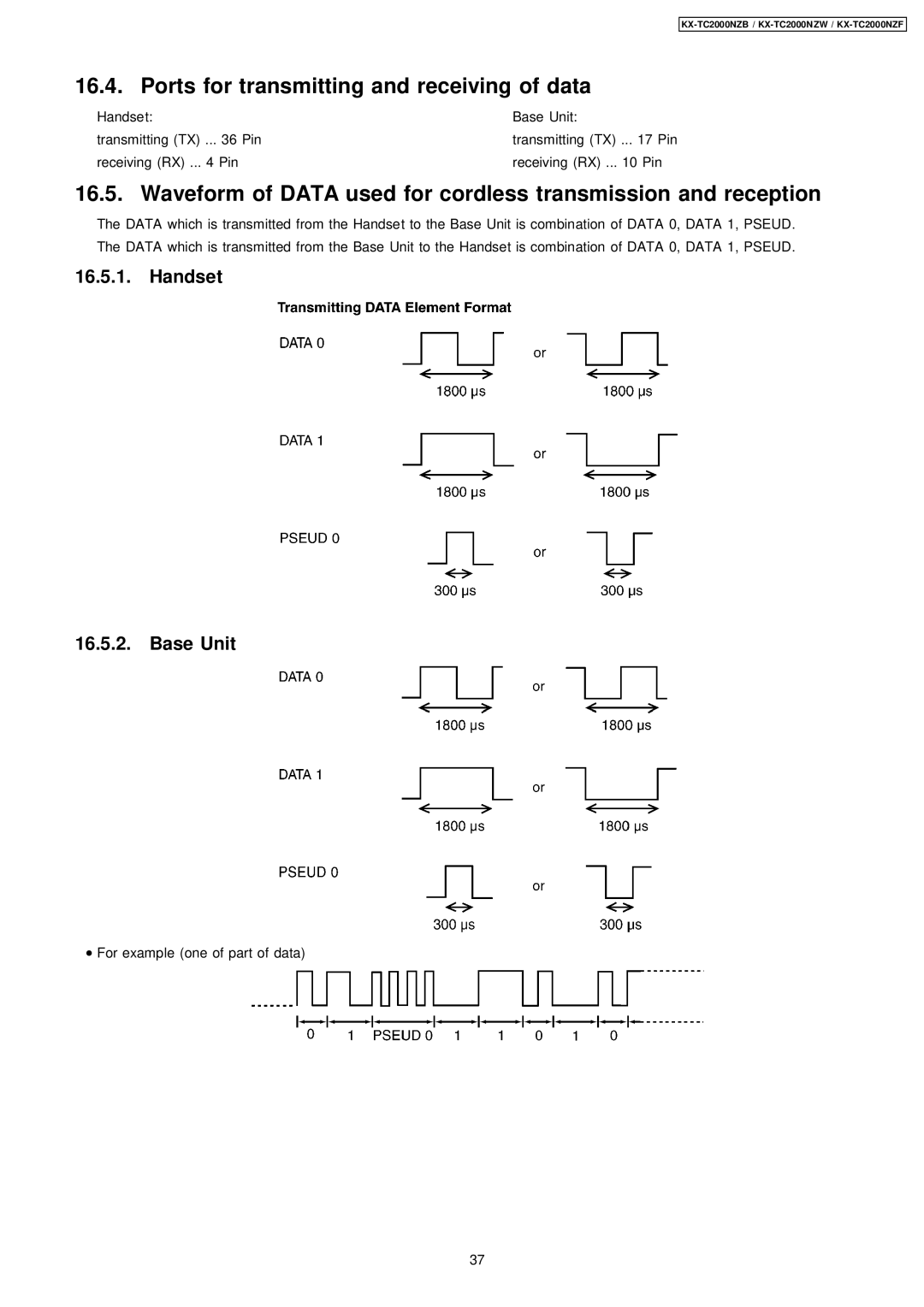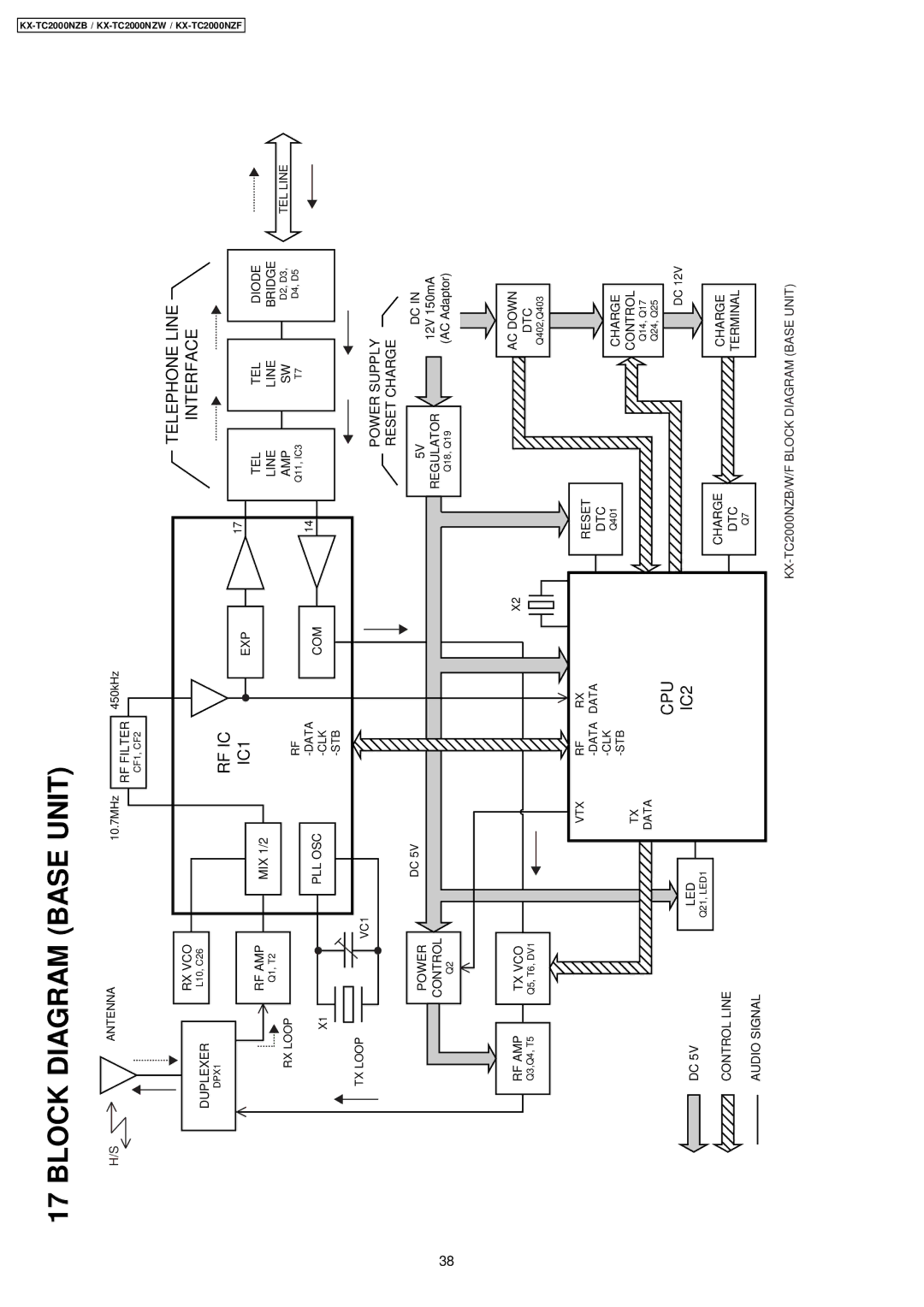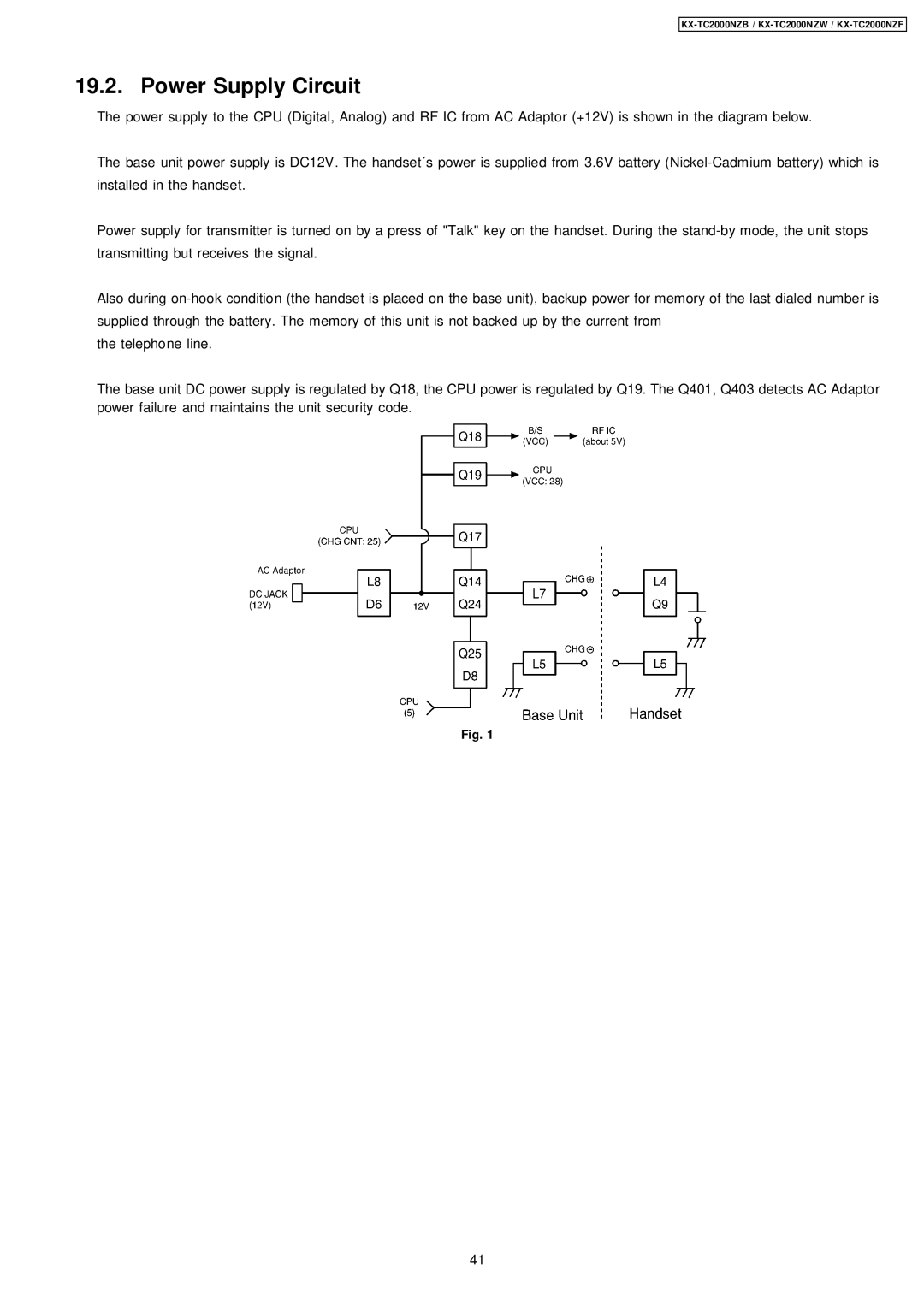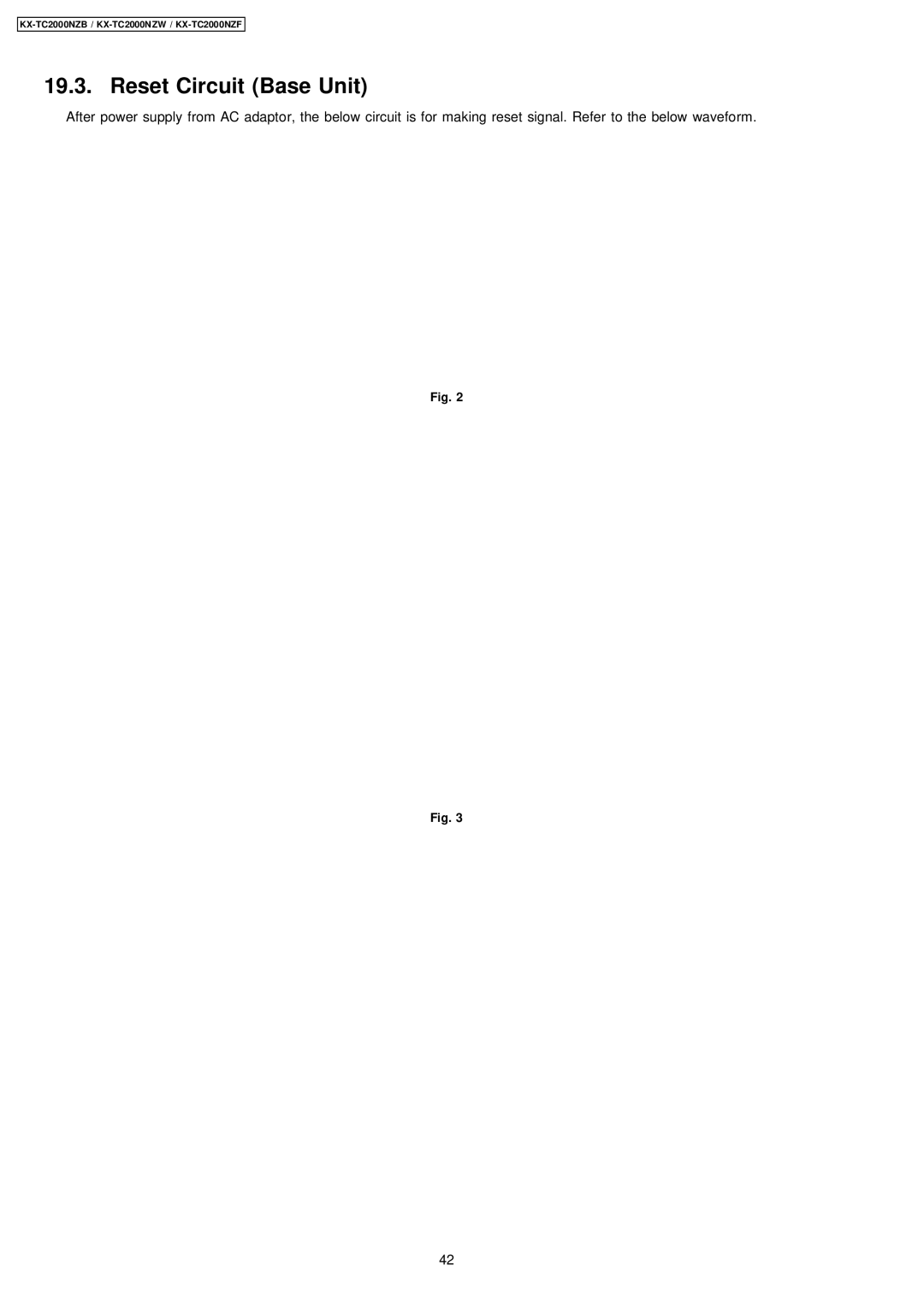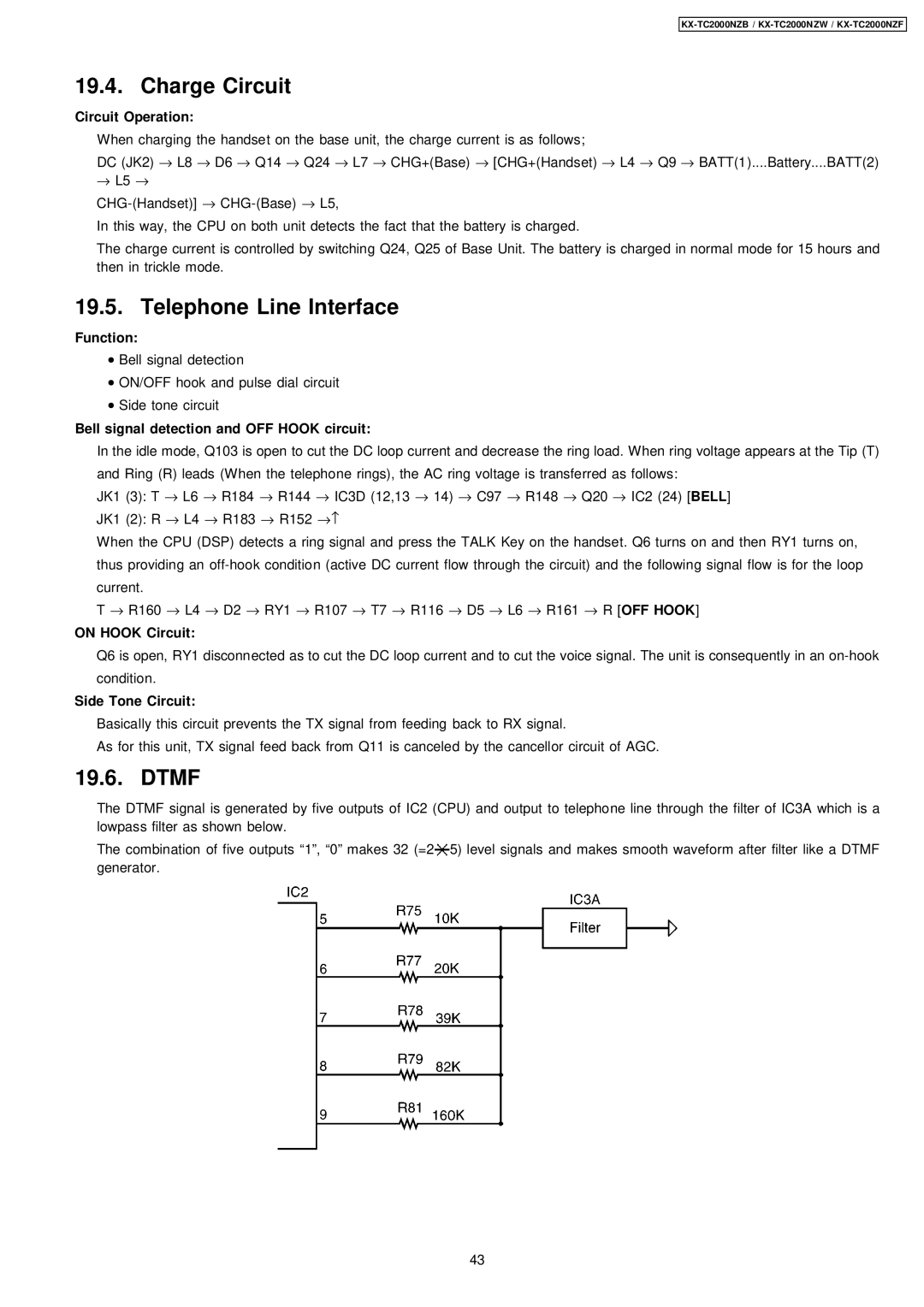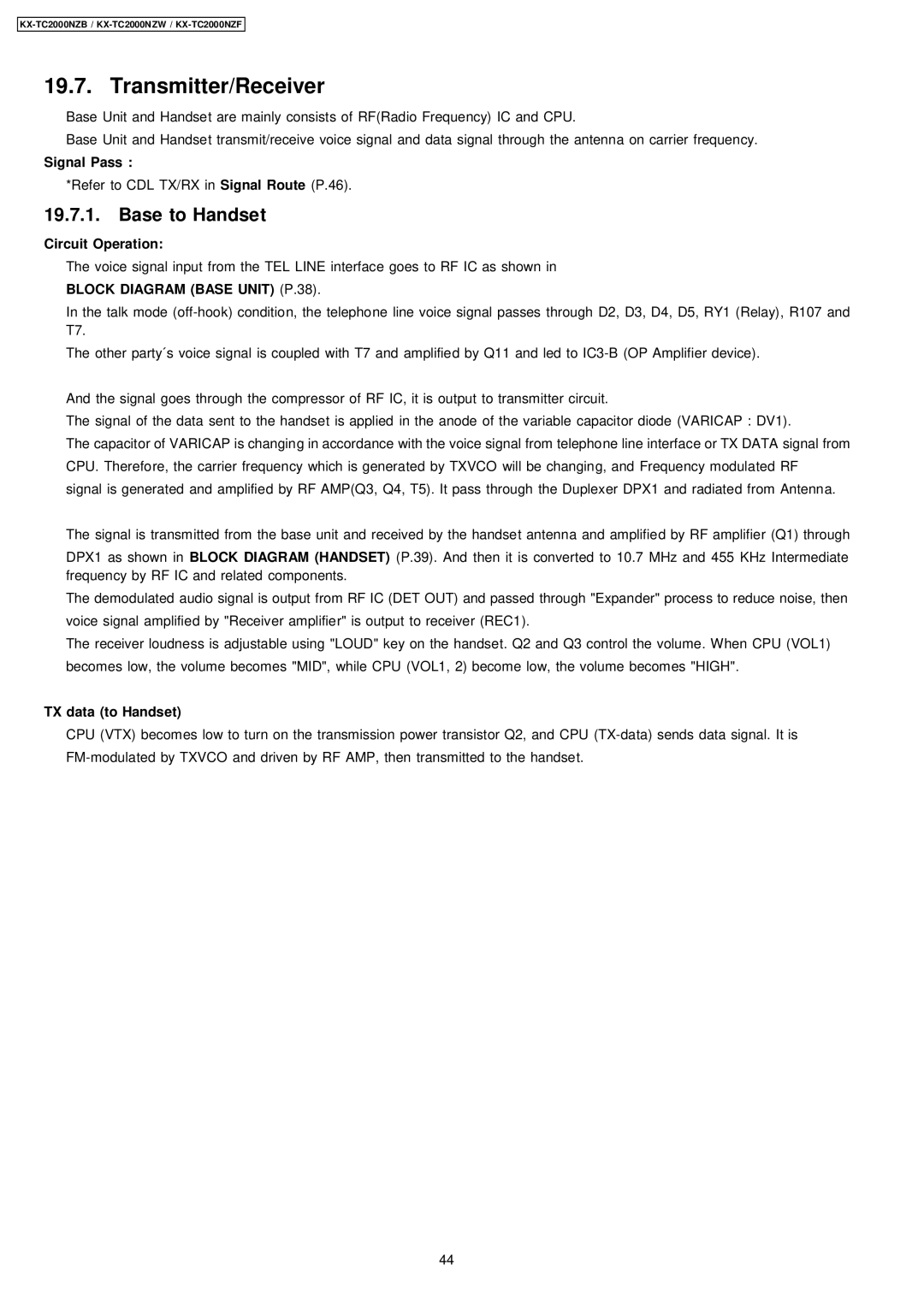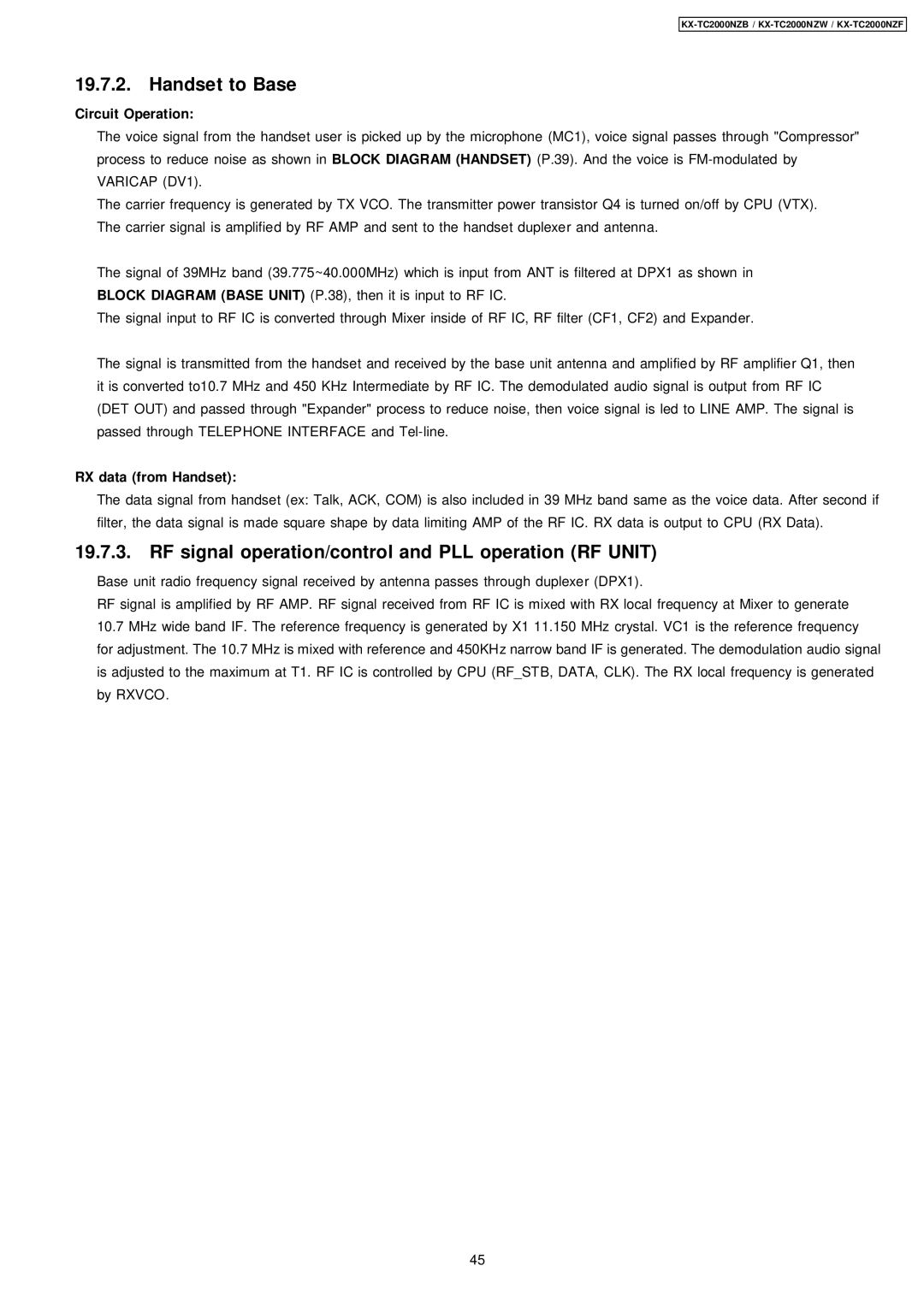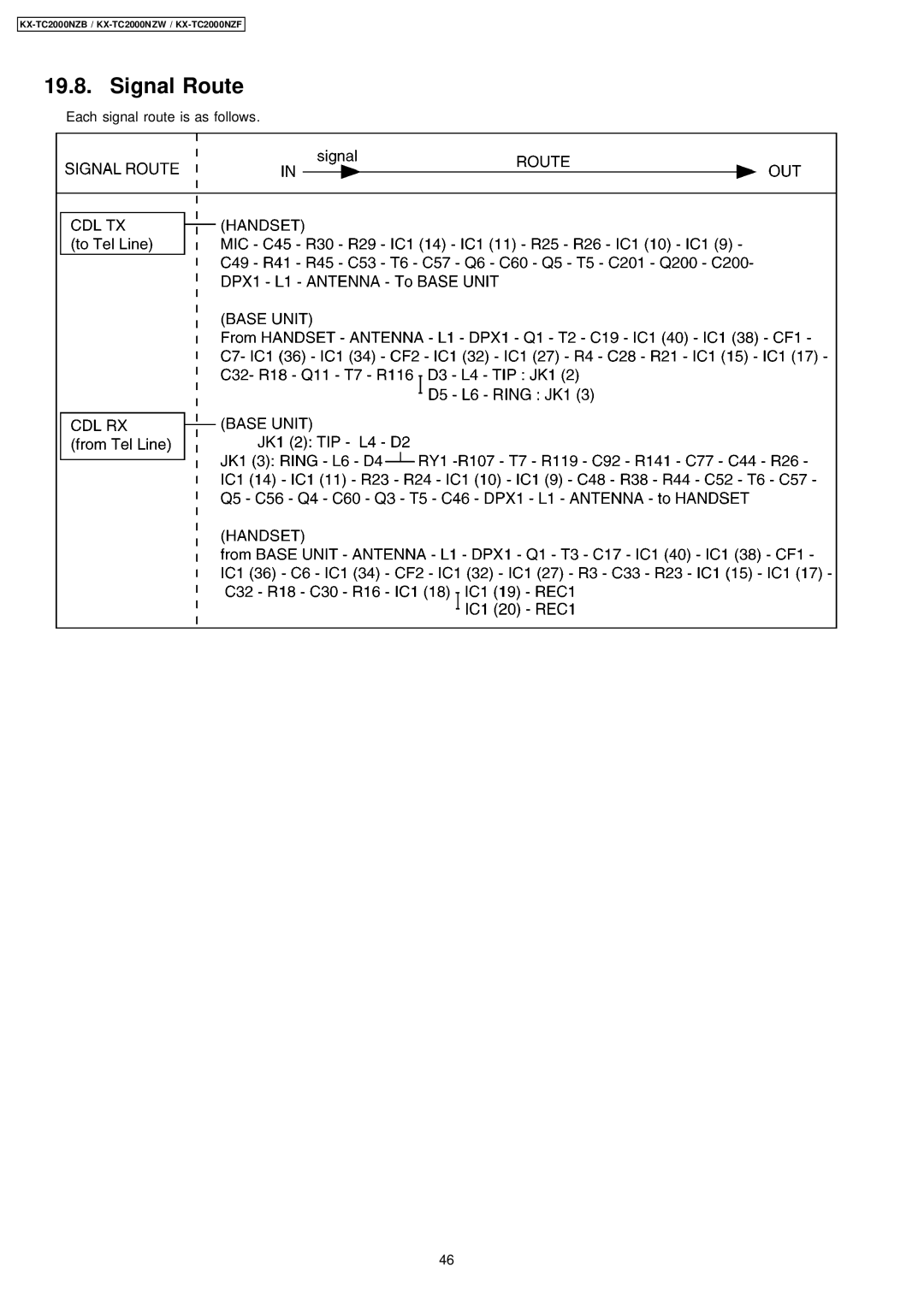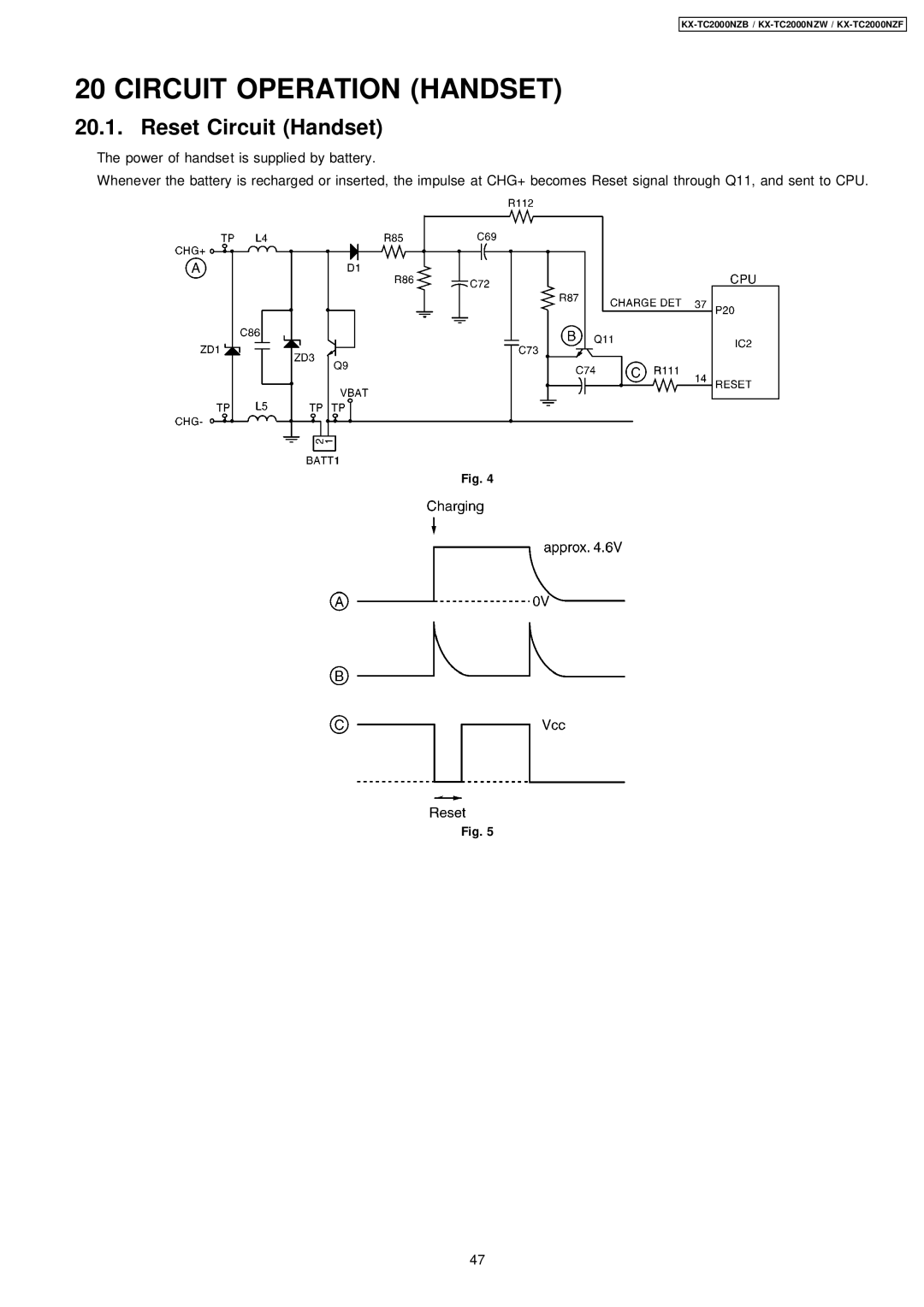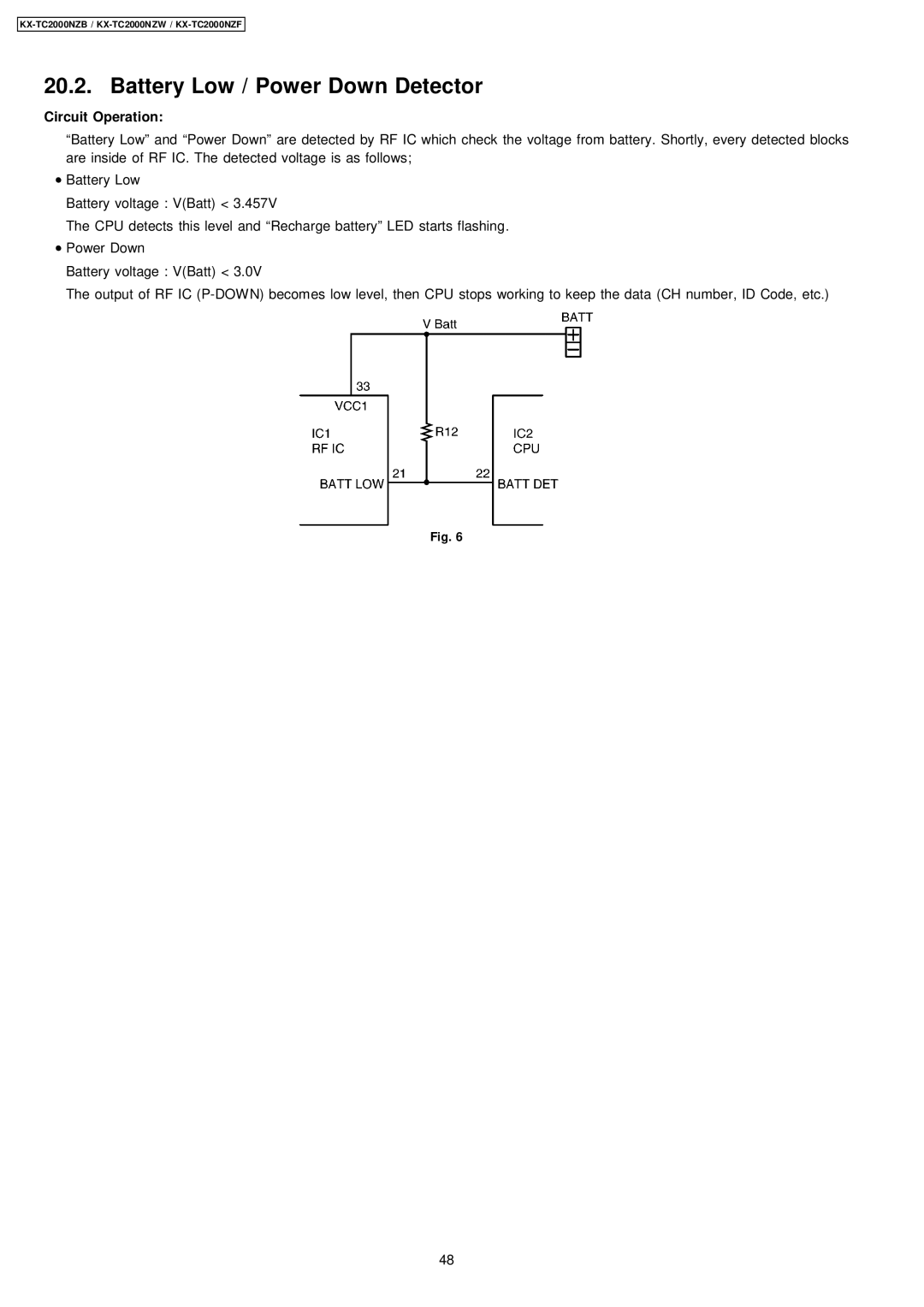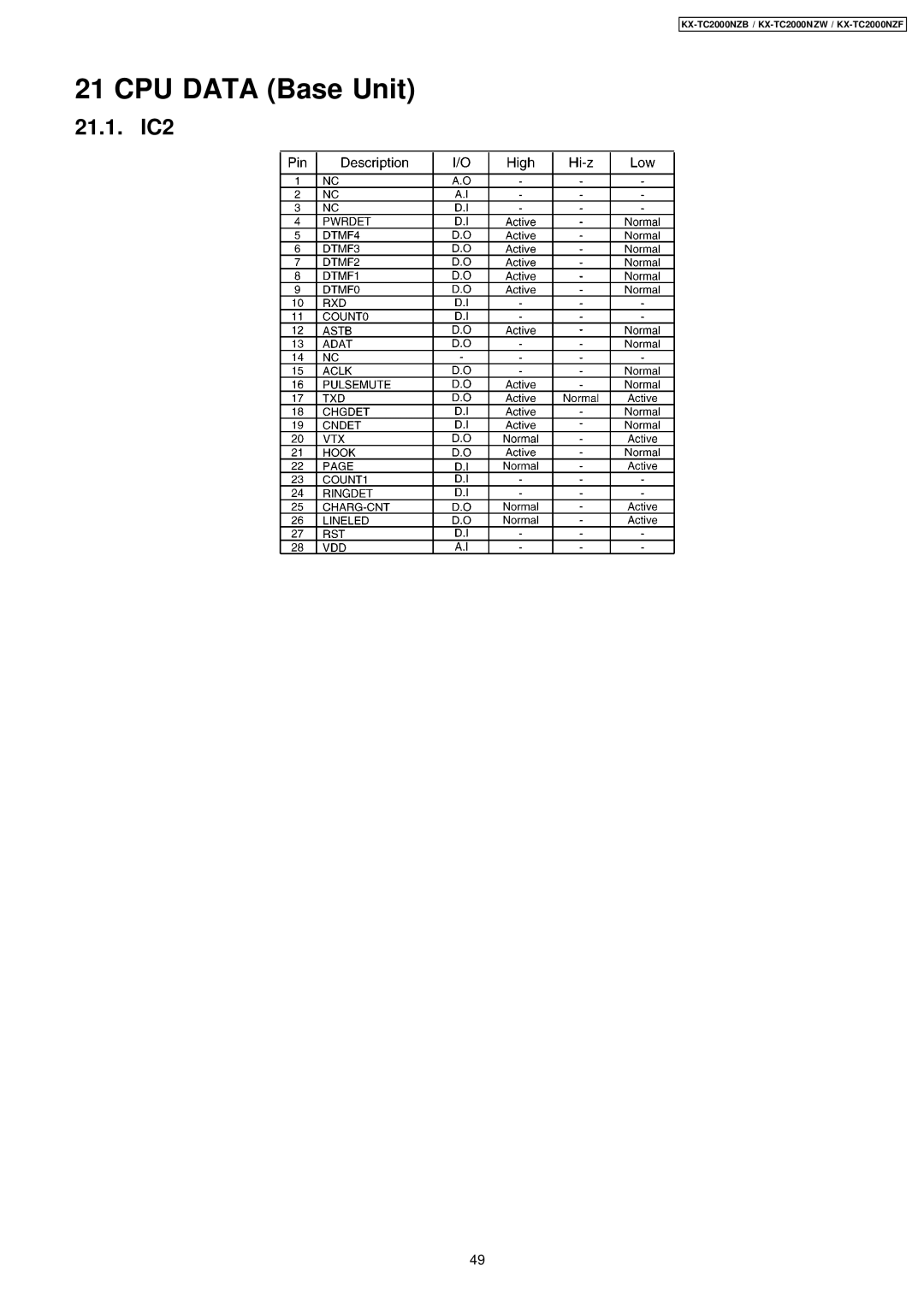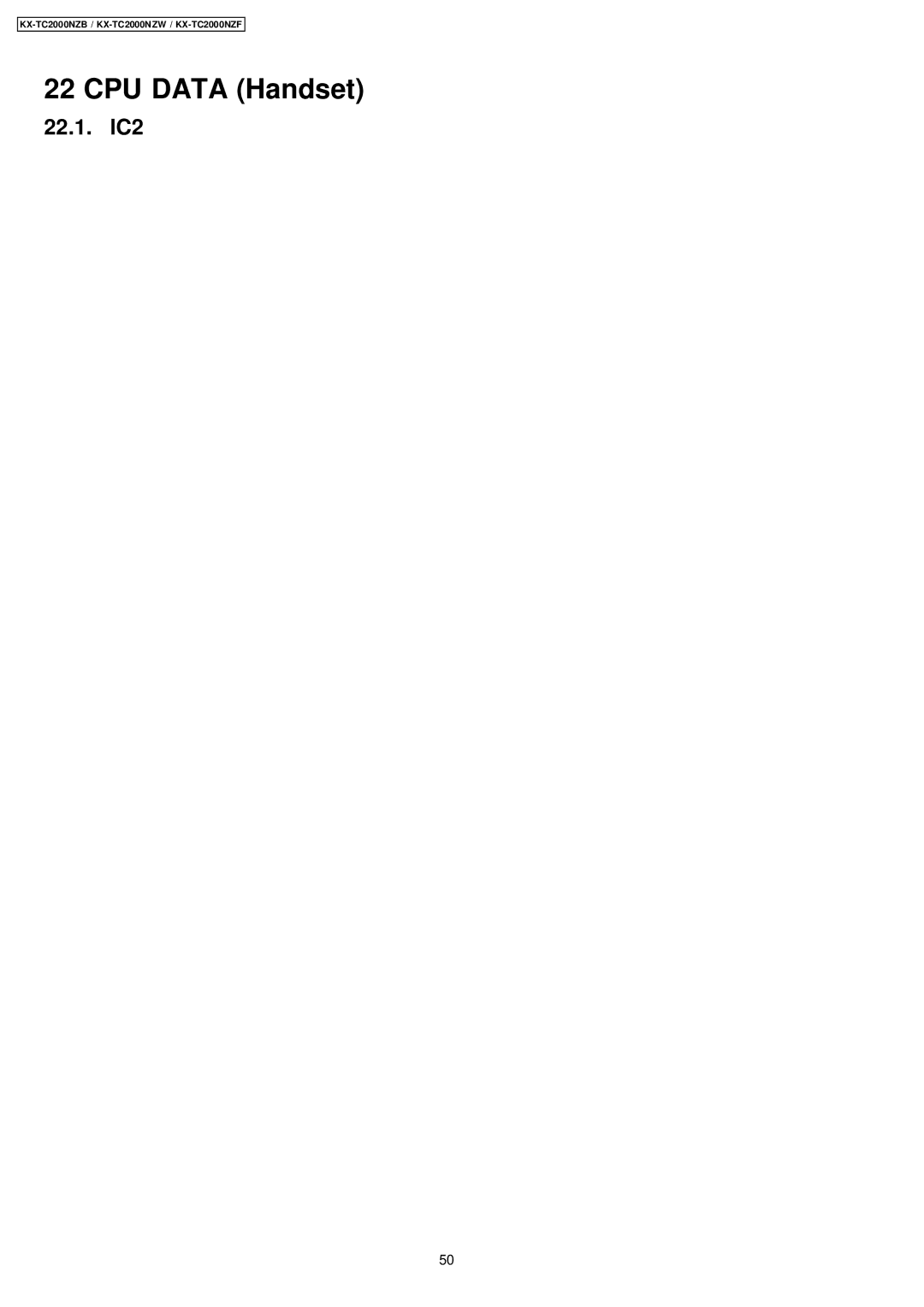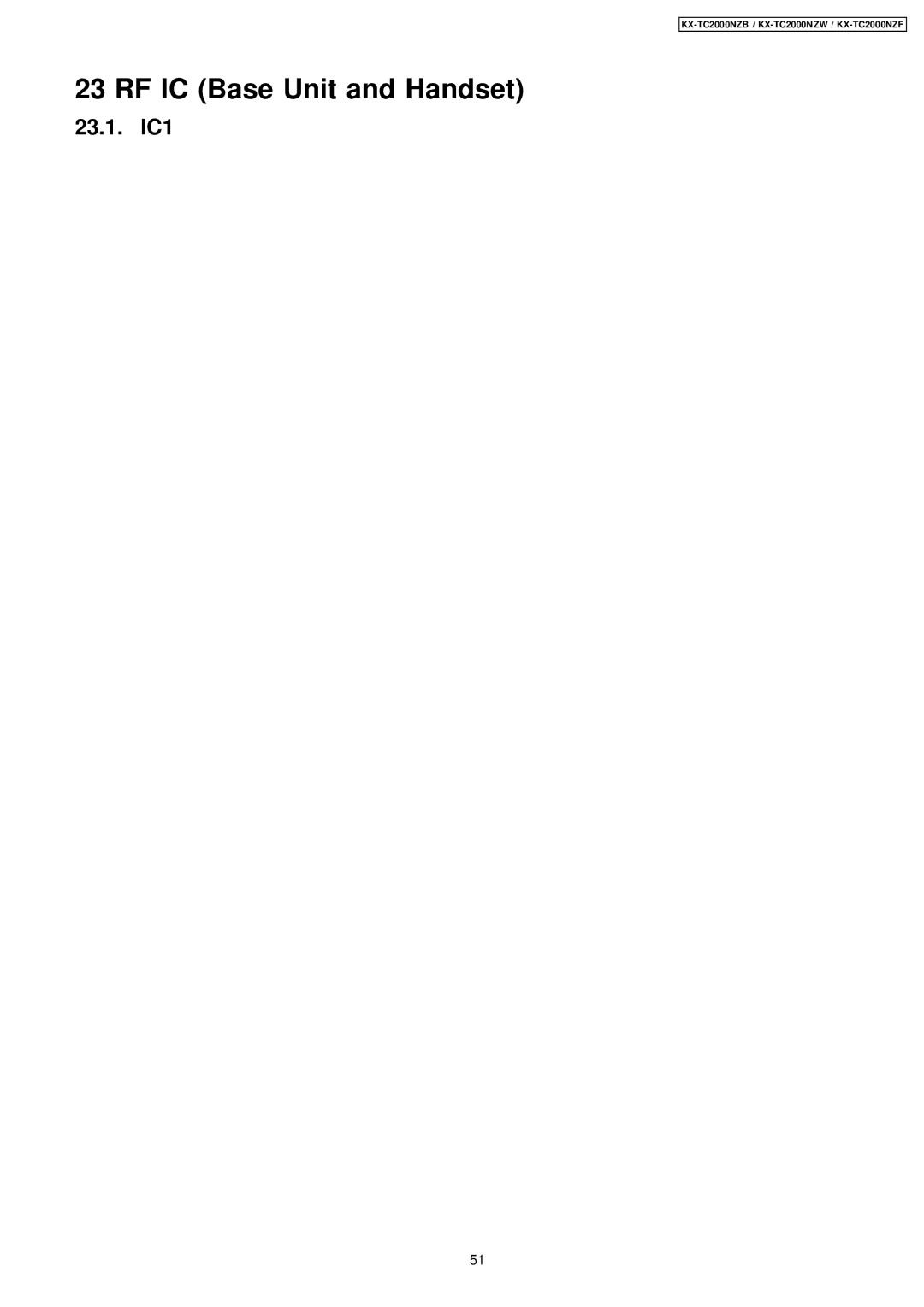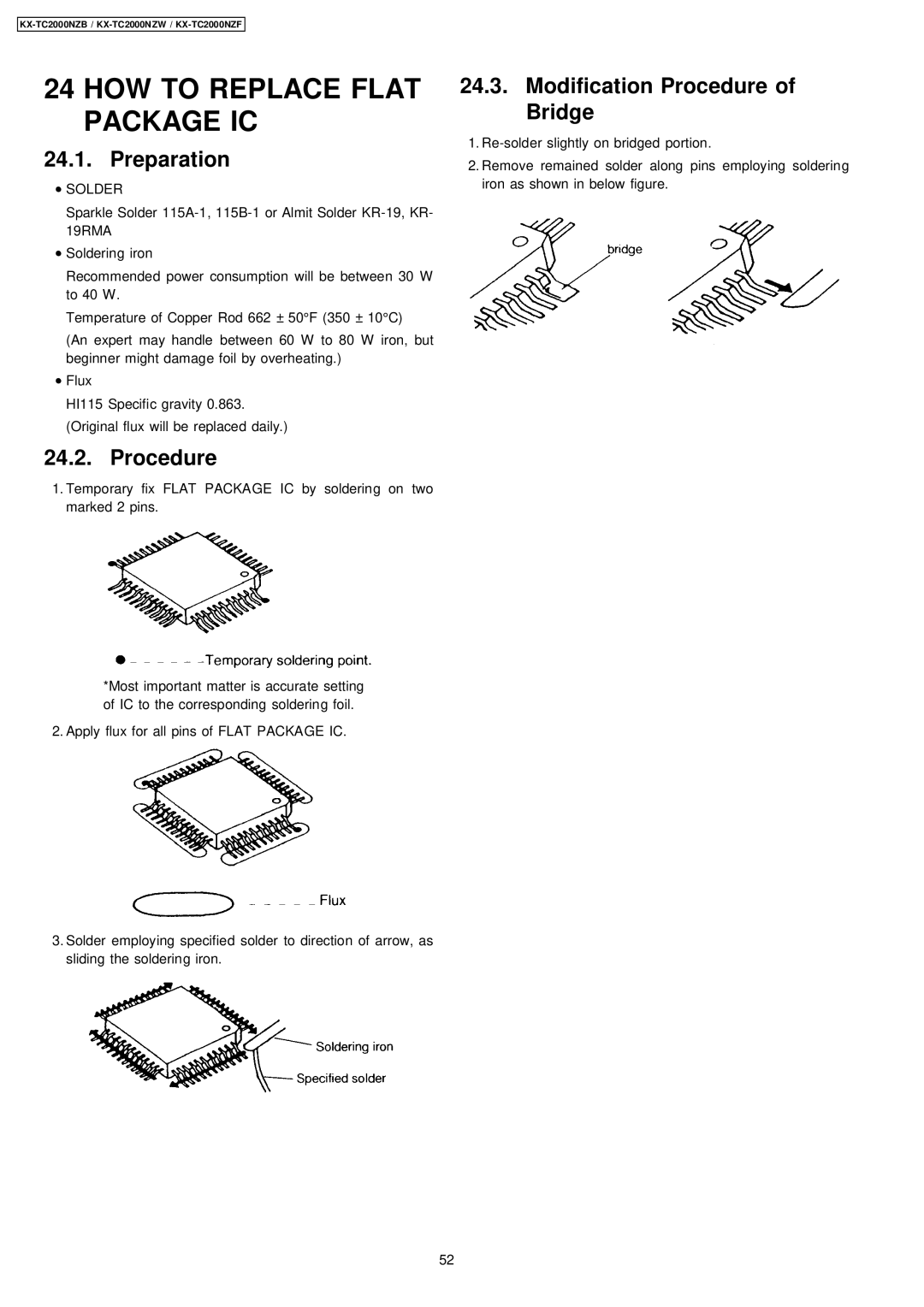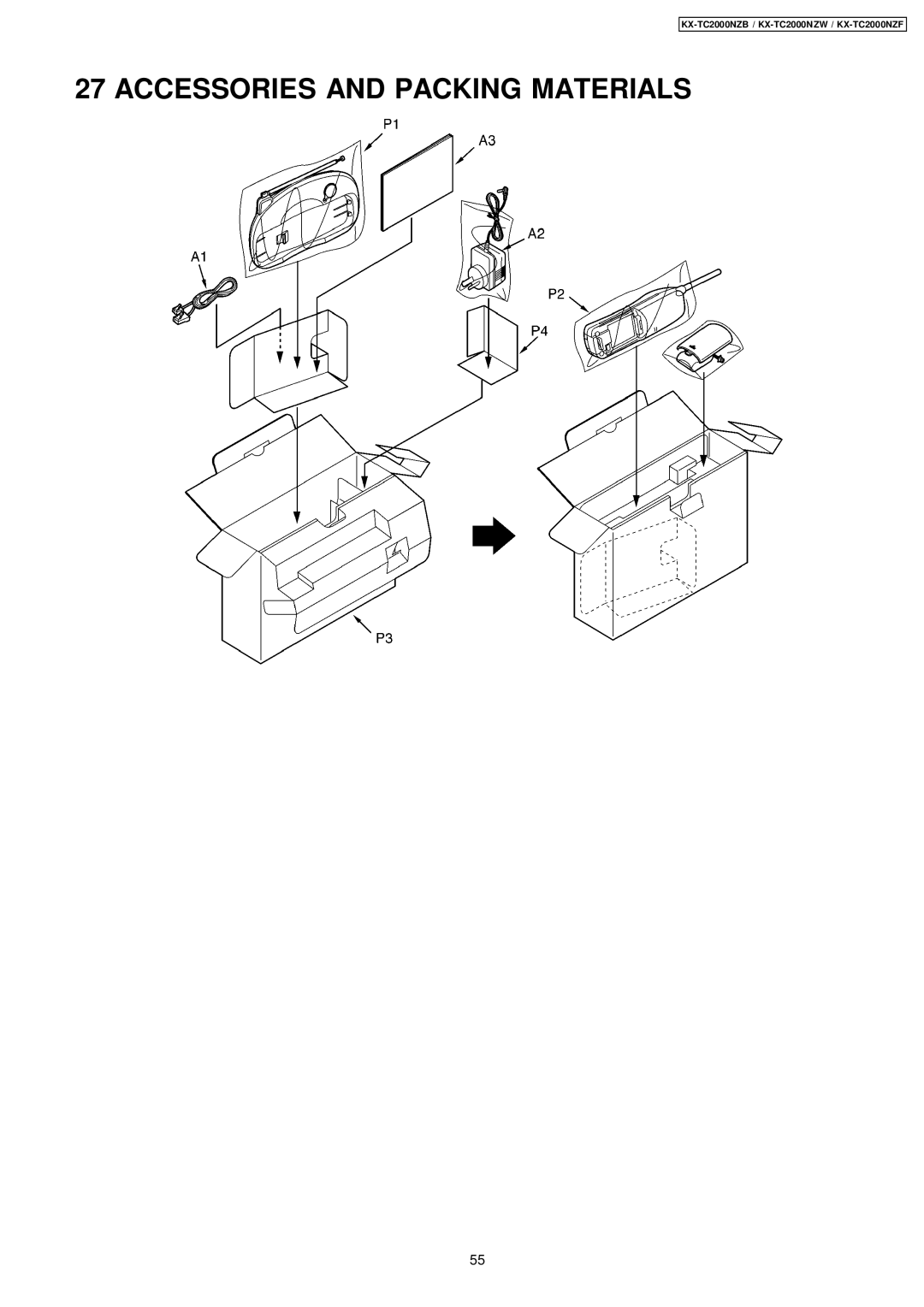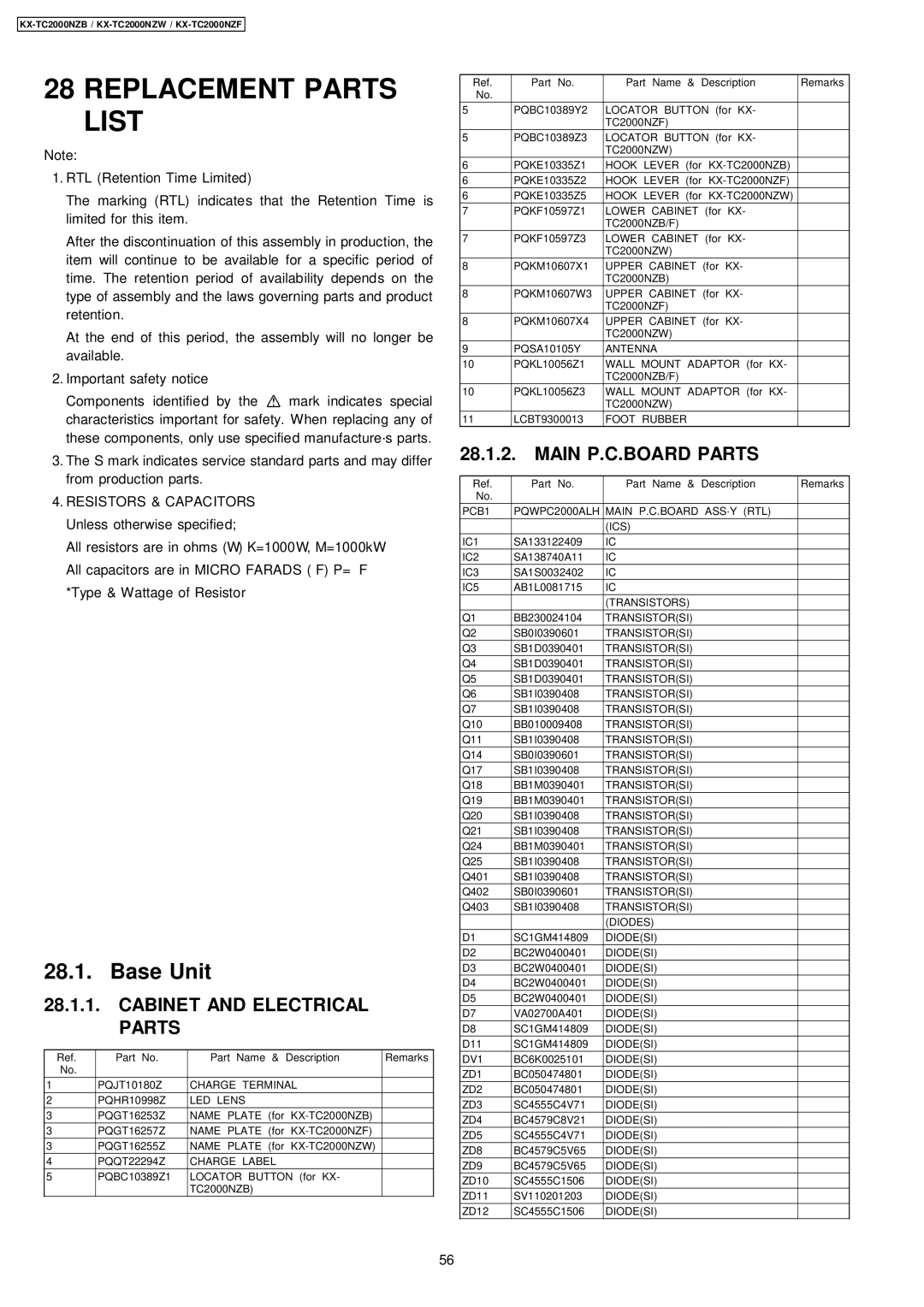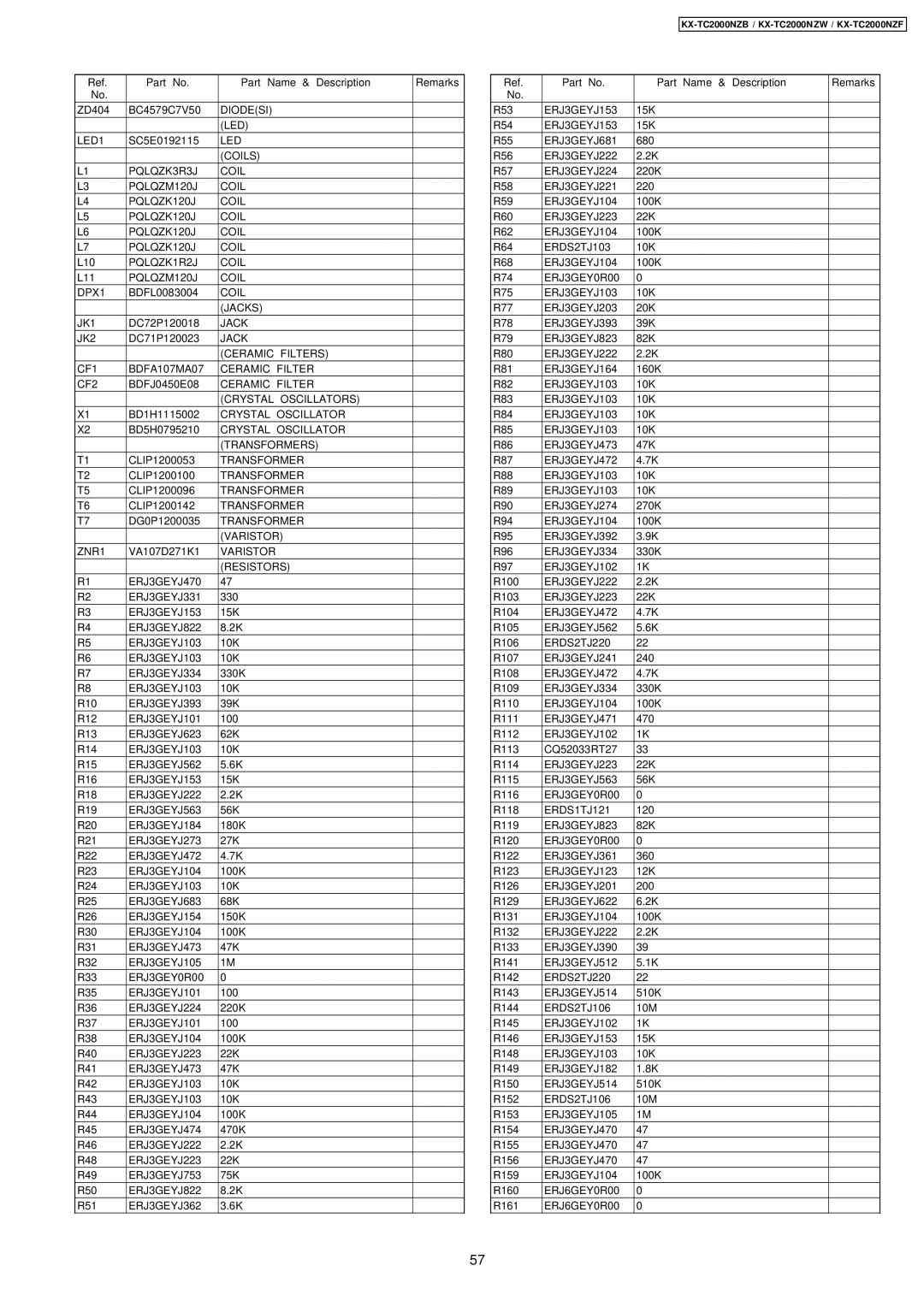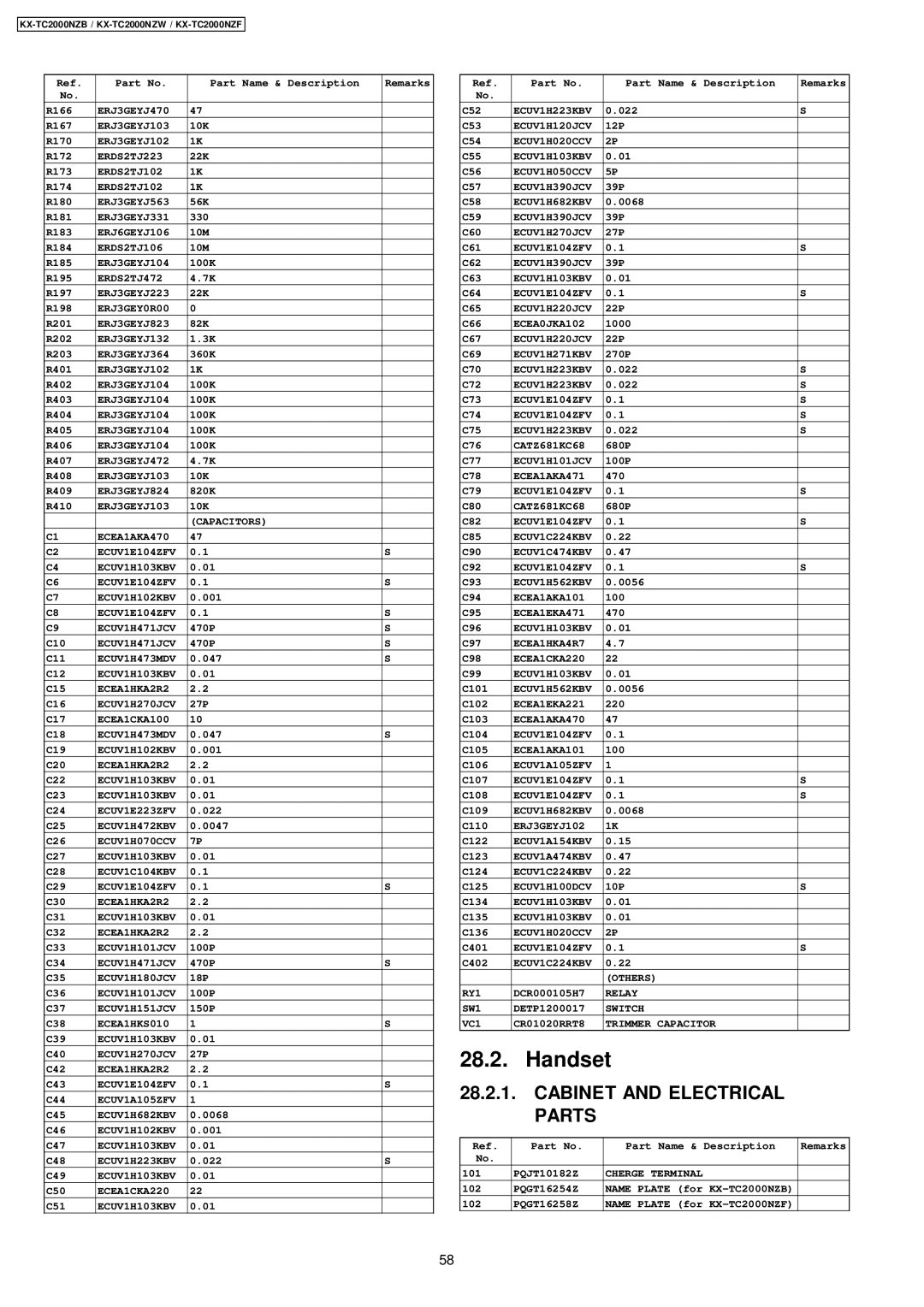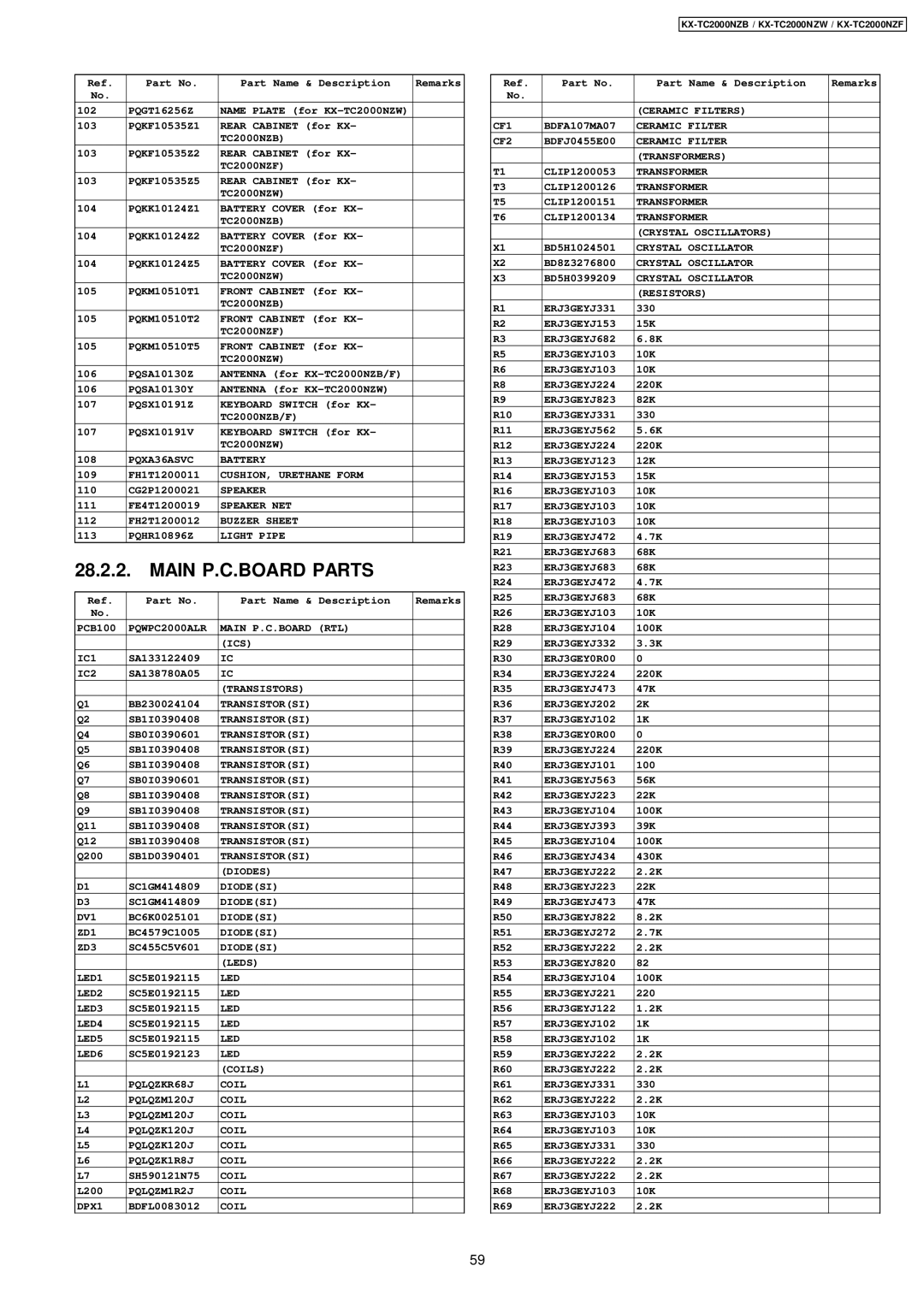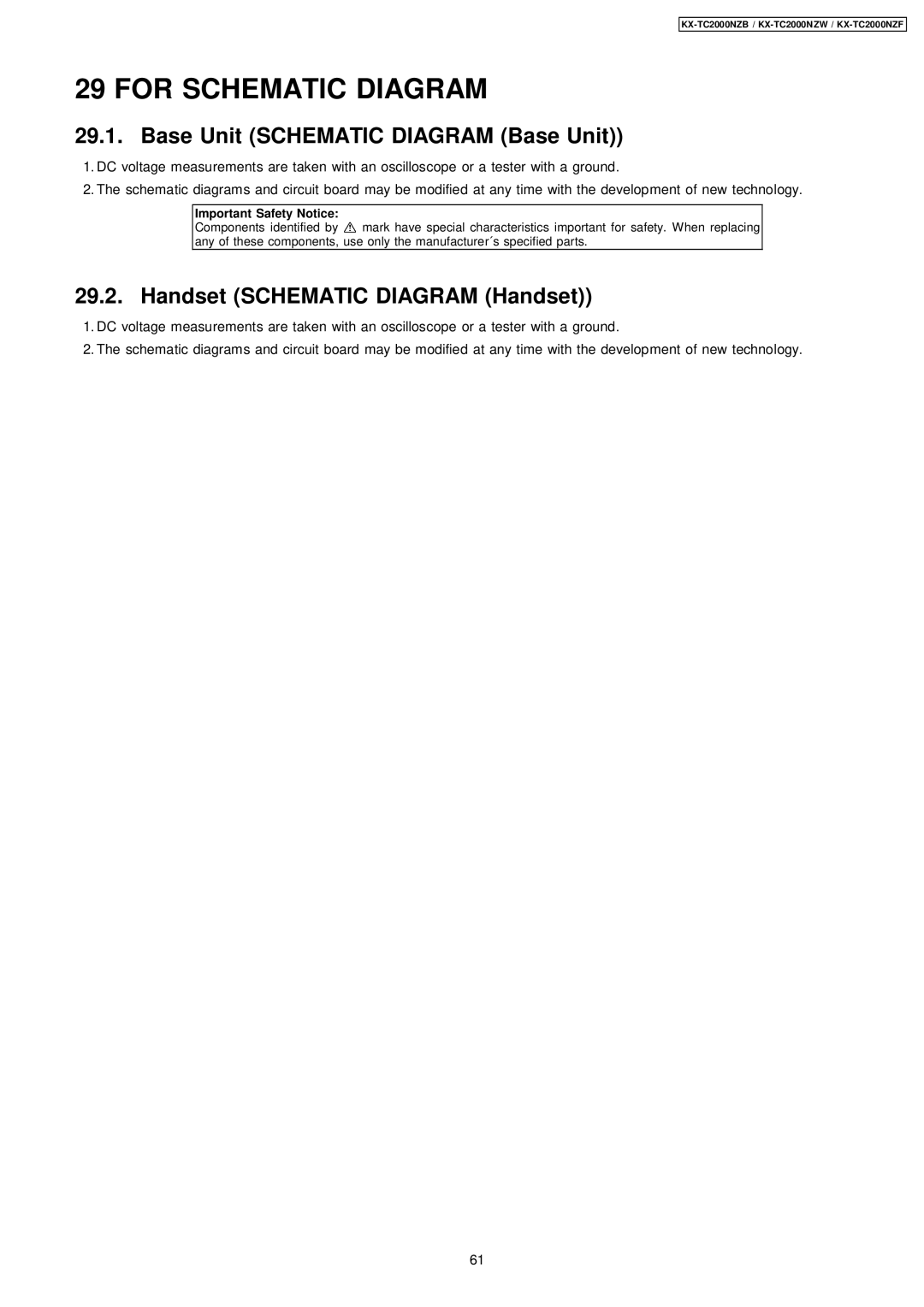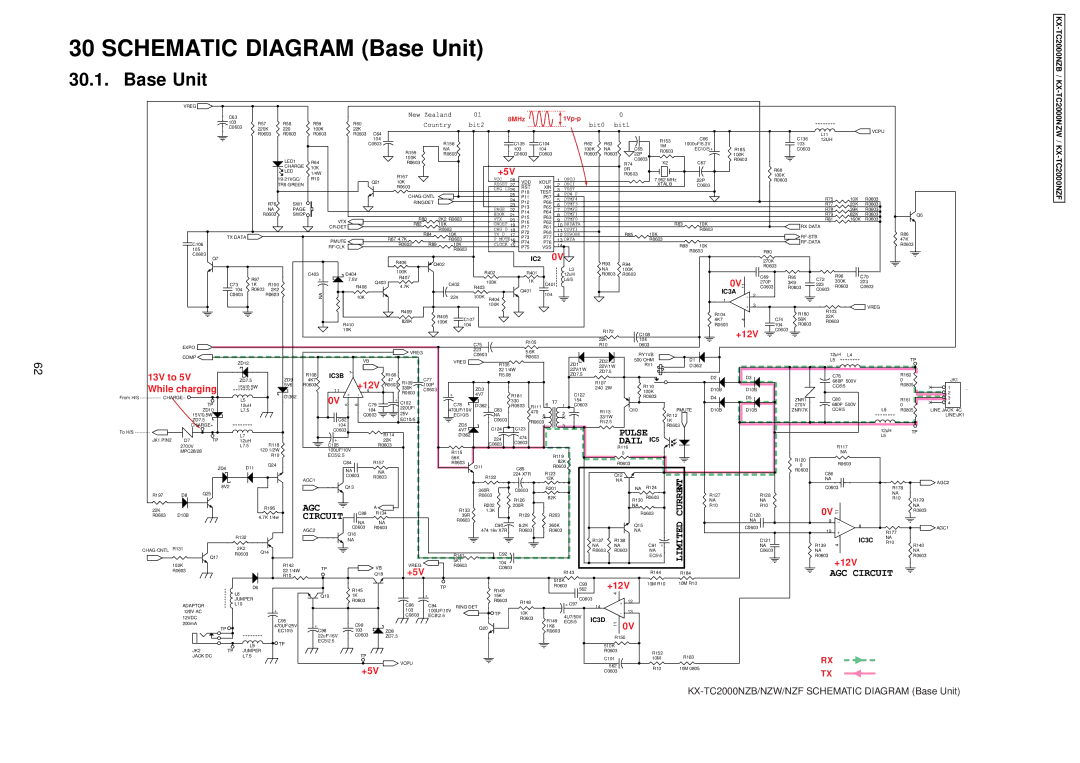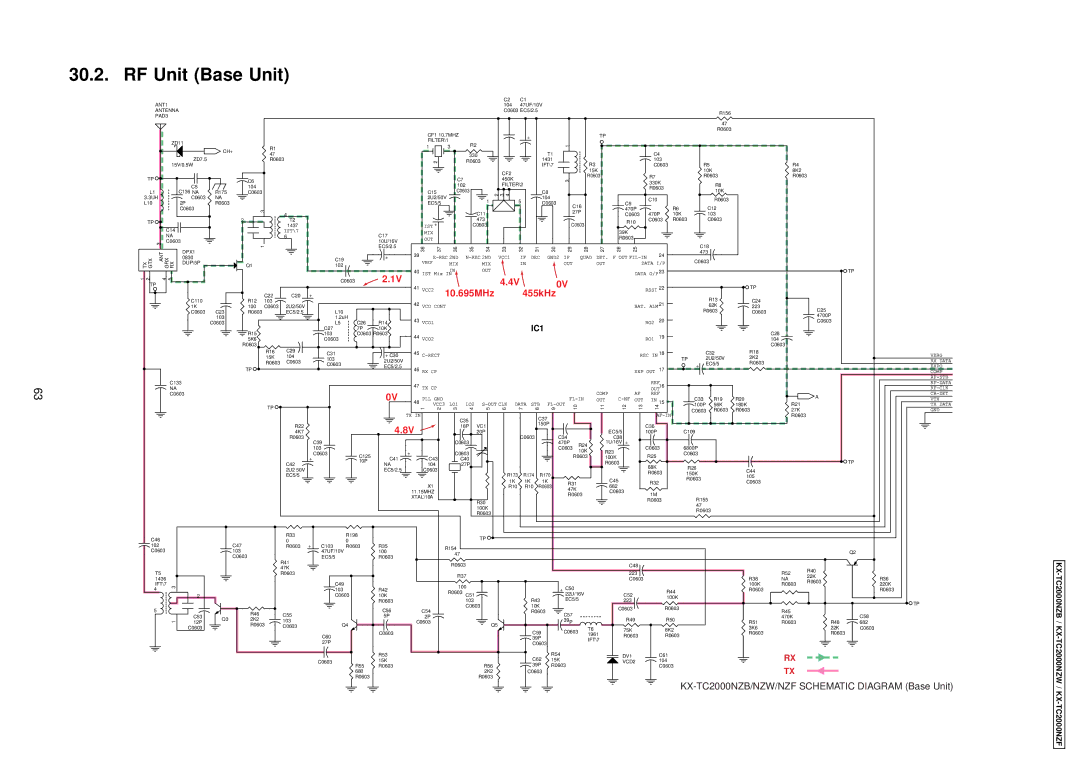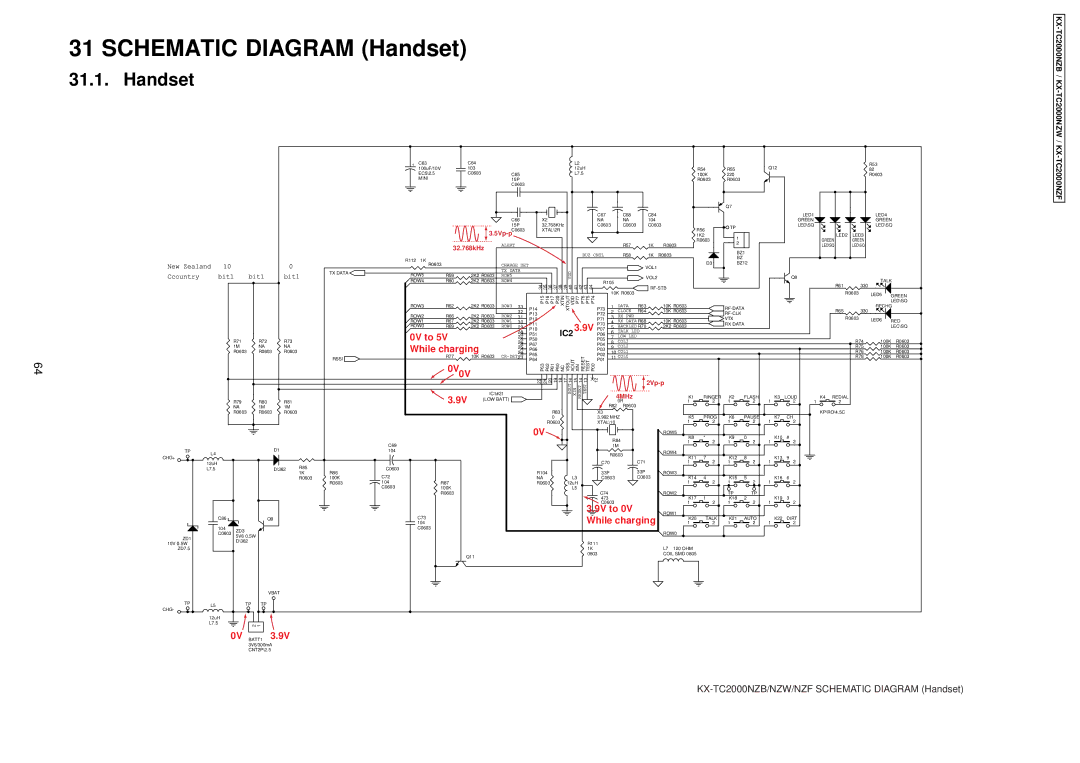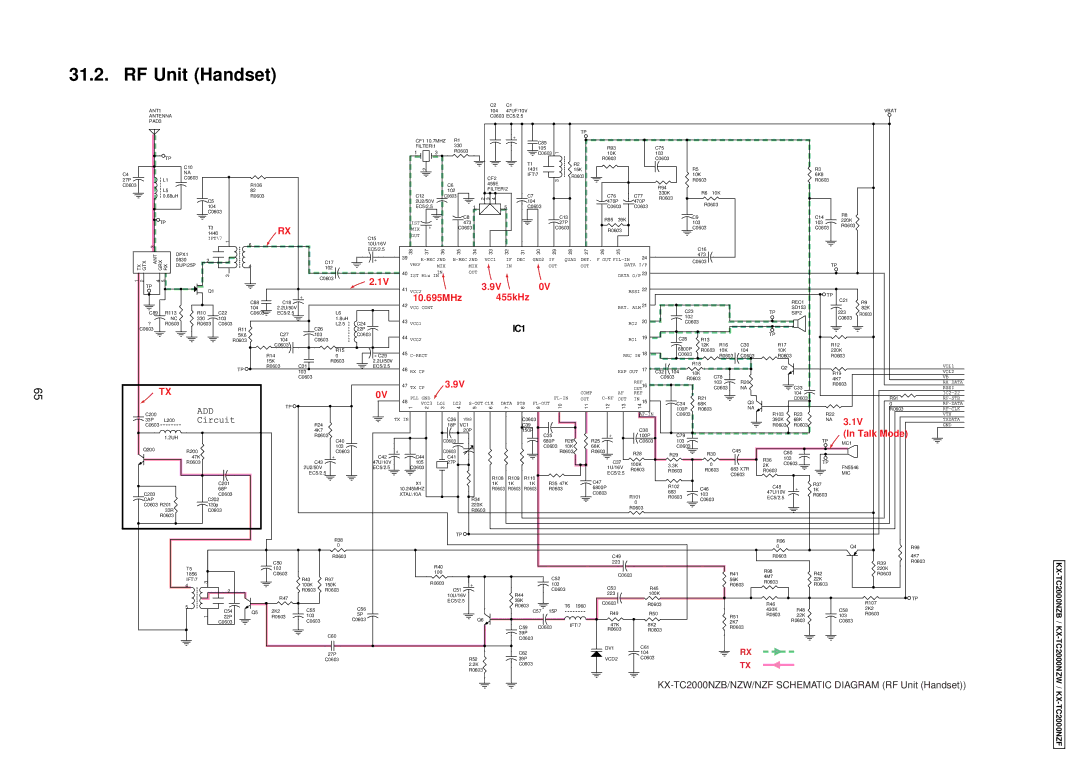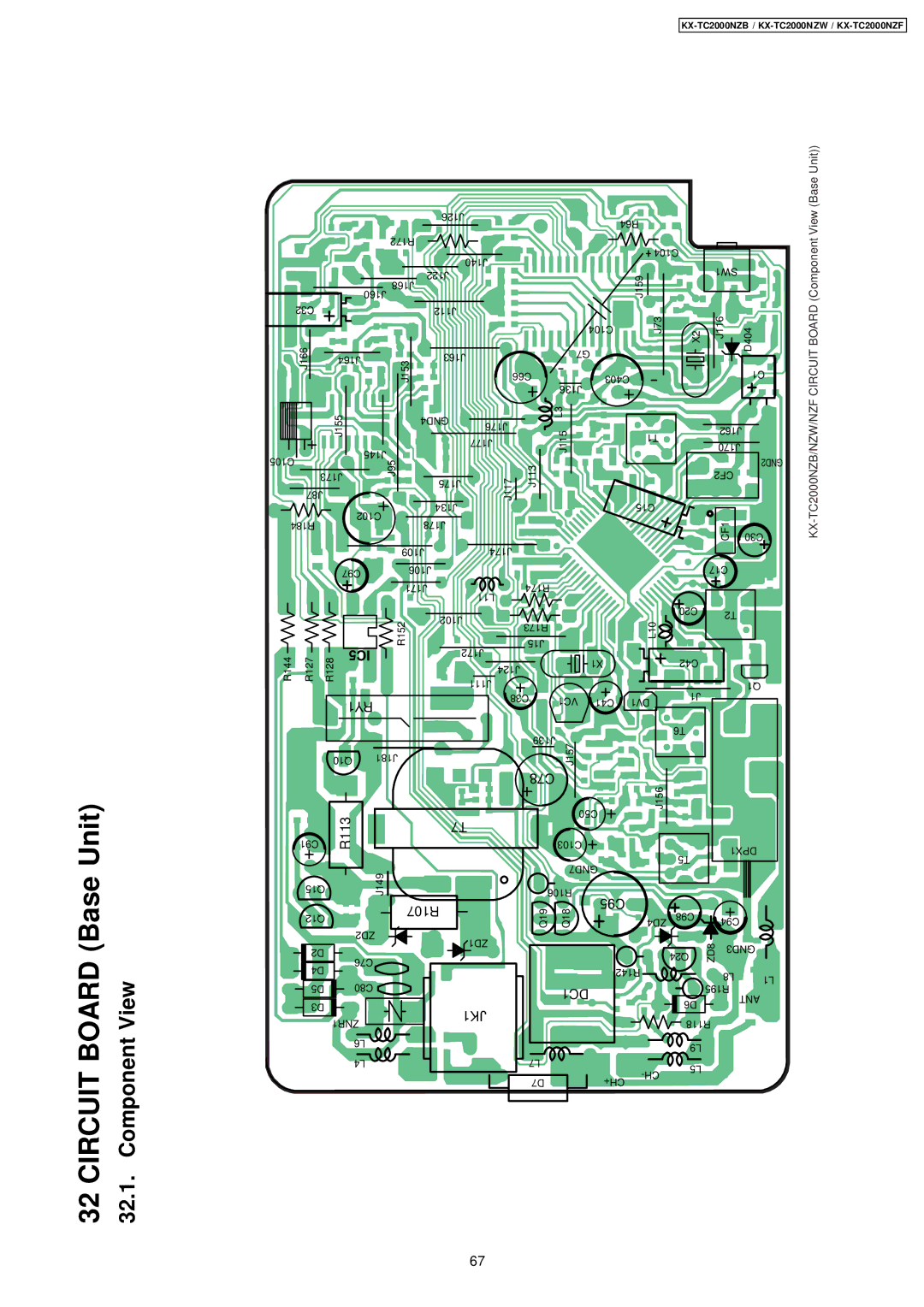KX-TC2000NZB / KX-TC2000N ZW / KX-TC2000NZF
19.7. Transmitter/Receiver
Base Unit and Handset are mainly consists of RF(Radio Frequency) IC and CPU.
Base Unit and Handset transmit/receive voice signal and data signal through the antenna on carrier frequency.
Signal Pass :
*Refer to CDL TX/RX in Signal Route (P.46).
19.7.1. Base to Handset
Circuit Operation:
The voice signal input from the TEL LINE interface goes to RF IC as shown in
BLOCK DIAGRAM (BASE UNIT) (P.38).
In the talk mode
The other party´s voice signal is coupled with T7 and amplified by Q11 and led to
And the signal goes through the compressor of RF IC, it is output to transmitter circuit.
The signal of the data sent to the handset is applied in the anode of the variable capacitor diode (VARICAP : DV1).
The capacitor of VARICAP is changing in accordance with the voice signal from telephone line interface or TX DATA signal from CPU. Therefore, the carrier frequency which is generated by TXVCO will be changing, and Frequency modulated RF signal is generated and amplified by RF AMP(Q3, Q4, T5). It pass through the Duplexer DPX1 and radiated from Antenna.
The signal is transmitted from the base unit and received by the handset antenna and amplified by RF amplifier (Q1) through
DPX1 as shown in BLOCK DIAGRAM (HANDSET) (P.39). And then it is converted to 10.7 MHz and 455 KHz Intermediate frequency by RF IC and related components.
The demodulated audio signal is output from RF IC (DET OUT) and passed through "Expander" process to reduce noise, then voice signal amplified by "Receiver amplifier" is output to receiver (REC1).
The receiver loudness is adjustable using "LOUD" key on the handset. Q2 and Q3 control the volume. When CPU (VOL1) becomes low, the volume becomes "MID", while CPU (VOL1, 2) become low, the volume becomes "HIGH".
TX data (to Handset)
CPU (VTX) becomes low to turn on the transmission power transistor Q2, and CPU
44
